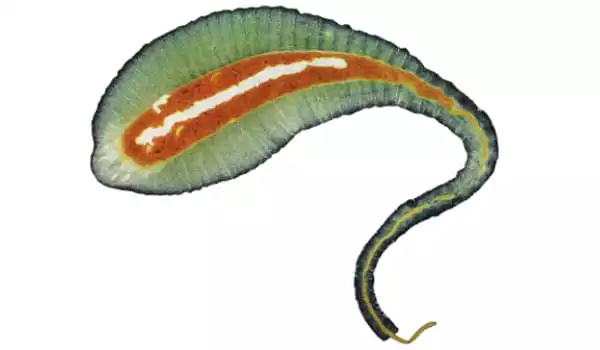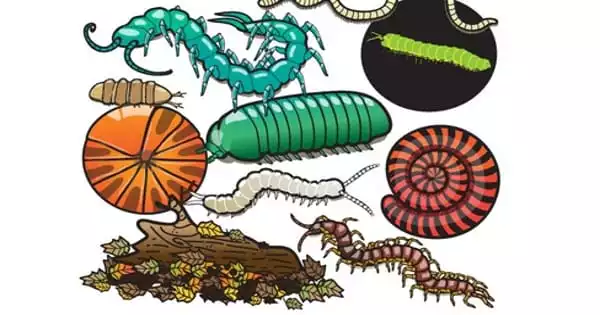Arthropods are invertebrates with an exoskeleton, segmented bodies, and paired jointed appendages. Arthropods are classified as members of the phylum Arthropoda. They are distinguished by their jointed limbs and chitin cuticle, which is frequently mineralised with calcium carbonate. The body plan of an arthropod is made up of segments, each with a pair of appendages. Arthropods have a bilaterally symmetrical body and an external skeleton. To continue growing, they must go through moulting stages, in which they shed their exoskeleton to reveal a new one. Some animals have wings. They are a hugely diverse group, with up to ten million different species.
Many insects and other arthropods, whether nectar-sucking butterflies or blood-sucking mosquitoes, have long been known to consume liquid food. The Leibniz Institute for the Analysis of Biodiversity Change (LIB) and the University of Bonn led a research team from Germany and Switzerland that discovered millipedes use a sucking pump to ingest liquid food. Sucking pumps have thus evolved independently in different groups of organisms over the course of several hundred million years. Surprisingly similar biomechanical solutions for ingesting liquid food have evolved in widely disparate animal groups as a result of this process. The findings of the study have now been published in the journal Science Advances.
Millipedes, like insects, crustaceans, and arachnids, are members of the megadiverse group of arthropods. While liquid-based diets have previously been observed in insects and arachnids, it was previously assumed that some millipedes also consume liquid food. A group of scientists led by Leif Moritz (Leibniz Institute for the Analysis of Biodiversity Change, University of Bonn), Dr. Thomas Wesener (Leibniz Institute for the Analysis of Biodiversity Change), and Prof. Dr. Alexander Blanke (University of Bonn) examined the heads of representatives of the species-poor and exotic Colobognatha.
The biomechanical-morphological similarities between groups of organisms indicate the strength of selection as soon as a food source provides even a slight evolutionary advantage.
Alexander Blanke.
The researchers discovered a sucking pump in millipedes that is strikingly similar to those found in insects using high-resolution tomography, histological methods, and electron microscopy. It is made up of a chamber that is widened by strong muscles in order to suck in liquid food. “The sucking pump, in conjunction with the protractible mouthparts, allows these millipedes to ingest more or less liquid food,” explains Leif Moritz, a doctoral student at the University of Bonn and the LIB.
For vision, arthropods use a combination of compound eyes and pigment-pit ocelli. Most species’ ocelli can only detect the direction from which light is coming, and compound eyes are the primary source of information, but spiders’ primary eyes are ocelli that can form images and, in a few cases, swivel to track prey. Arthropods have a variety of chemical and mechanical sensors, the majority of which are based on modifications to the many bristles known as setae that project through their cuticles.

As a result, the researchers were able to demonstrate that functional tools for a diet rich in liquid nutrients evolved several times independently in all major subgroups of arthropods. “The biomechanical-morphological similarities between groups of organisms indicate the strength of selection as soon as a food source provides even a slight evolutionary advantage,” explains Alexander Blanke, head of the University of Bonn’s working group for evolutionary morphology.
Arthropod species are estimated to number between 1,170,000 and 5 to 10 million, accounting for more than 80% of all known living animal species. The number of species is still difficult to calculate. This is because census modeling assumptions were projected onto other regions in order to scale up from counts in specific locations applied to the entire world. According to a 1992 study, Costa Rica alone had 500,000 species of animals and plants, 365,000 of which were arthropods.
The research also contributes to a better understanding of the origins of species diversity. This is due to the fact that, in contrast to the over 400,000 species of sucking insects, the group of Colobognatha millipedes consists of only about 250 species. “As a result, liquid-based feeding is not a general driver of species richness,” says Thomas Wesener, head of the LIB’s Myriapoda section. Because these millipedes are mostly found in moist environments and cannot fly, their dispersal options appear to be limited, and they appear to be more vulnerable to environmental change. “Today’s sucking millipedes are most likely a relict group and the remnant of a much larger diversity,” Alexander Blanke speculates.





